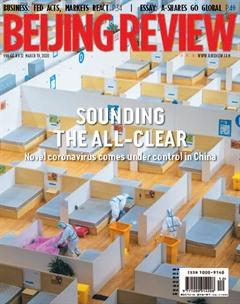LOOKING BEYOND THE CORONAVIRUS
By Peter Walker
The novel coronavirus is dominating the 2020 global news cycle. The virus has reached more than 110 countries and regions, killed over 4,000 people.
Beyond its health implications, the virus is impacting the global economy, with economic growth in 2020 expected to drop from a projected 2.9 percent to 1.5 percent. The travel, hospitality and manufacturing industries are already heavily affected as a result of travel advisories and disrupted supply chains.
China critics are not missing this opportunity to chime in on a micro level, saying there was a cover-up, there should have been individual testing rather than a mass quarantine, medical staff should have been protected, and theres no excuse for a shortage of some of the most common medical supplies. At a macro level, the critics point to a lack of accountability and transparency as well as the government losing the support of the people.
While the impact of the virus continues to unfold, its not too early to step back from the predictable media noise and look dispassionately at what has happened and project the longer-term implications.
There were a number of core, early health concerns: Where did the virus originate, how does it spread, what are the symptoms, how is it treated, what populations are the most vulnerable, what is the contagion period, and can an effective vaccine be developed in a timely manner?
Once the core health issues are resolved, the key tactical question is how to control the spread of the virus. At one extreme is individual testing, followed by quarantine for those testing positive; at the other end is a mass home quarantine of people living in an area with a concentration of cases. The Chinese New Year in late January complicated this issue considerably, as its the busiest annual travel period in China.
The government experts answered the core health questions within six weeks of the outbreak.
The virus was identifi ed as a coronavirus originating in wild animals, most likely bats.
The virus spread by direct contact with liquid nodules distributed by sneezing or coughing as opposed to airborne particles.
The virus is highly contagious for infected individuals in close proximity and individuals are highly contagious before they are symptomatic.
In the most serious cases, the respiratory system is affected with an average mortality rate of approximately 2 percent, with much high mortality rate for elderly males with preexisting health issues.
Most medical experts believe an effective vaccine could be available in 12-18 months.
China opted to impose a massive quarantine around the epicenter of Wuhan in the central province of Hubei, the largestever imposed globally. While some critics believe China should have relied on individual testing, it would have been impractical given the sheer population size of the city at 11 million, the rapidly growing number of confirmed cases and the rate at which the virus spread. Few countries, if any, have the resources and discipline to enforce a quarantine of this magnitude in such a short amount of time.
To deal with the logistical issues, China rapidly built medical facilities—includ- ing two hospitals erected in 10 days—and multiplied manufacturing capacity for masks, ventilators and other necessary medical equipment. The net result is a high level of containment with the number of new cases declining sharply. The World Health Organization estimates Chinas aggressive approach to the quarantine and extensive ongoing monitoring deferred the spread of the virus within China and to other countries by two to three weeks.
This approach, accompanied by aggressive health screenings and Chinas wellknown discipline in execution, makes it likely that new outbreaks would be identifi ed and addressed quickly.
Its likely the lessons from the coronavirus epidemic will turn into government action on multiple fronts. Already China announced a strict ban on illegal wild animal trade with infrastructure for enforcement. Other issues to be dealt with include prompt notification to medical personnel, emergency plans for dealing with large quarantined populations, better approaches to quickly expanding medical facilities to meet surges in patient populations, protocols for protecting medical staff, and production response to demand surges for medical supplies and equipment.
No government can guard against all natural and man-made disasters. The test is learning and enforcing better protective measures, better recovery plans to mitigate damages, and ensuring resources are ready when the next disaster strikes. While Chinas response to the coronavirus was not perfect, it is likely to be judged as largely effective compared to any other major country dealing with this virus at such a scale.

